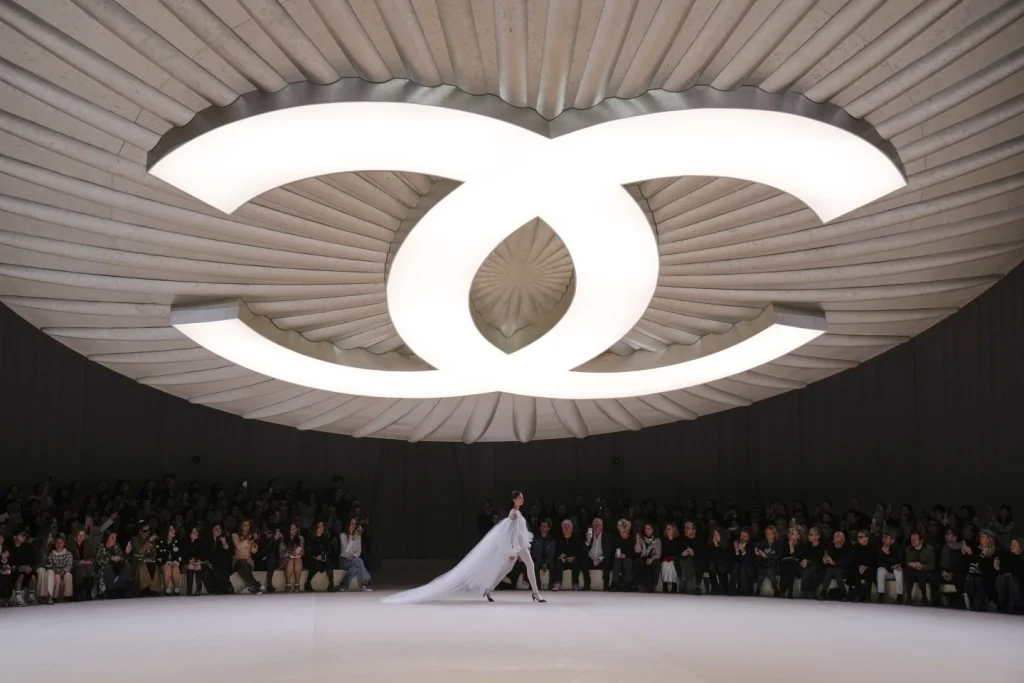The world of high fashion is often characterized by its extravagance and opulence, but Chanel’s Spring Couture show in Paris took this to a whole new level.
The event was nothing short of surreal, with towering metal scissors serving as a symbolic gateway for celebrity guests such as Naomi Campbell and Kendrick Lamar.
As they navigated their way past this larger-than-life prop, it was clear that this would be no ordinary fashion show.
The centerpiece of the show was the humble yet iconic button. This seemingly small and insignificant fashion element was given center stage, featured in a short film and as a giant sculpture descending from the ceiling.
The sheer audacity of this feat of fashion theatrics left guests in awe, with cameras flashing and gasps of delight filling the air. Even the renowned movie director Baz Luhrmann was moved to give his nod of approval to this spectacular display.
The use of the button as a focal point for the show speaks to the attention to detail and the celebration of the seemingly mundane that is characteristic of Chanel’s design ethos.
It is a reminder that even the smallest of details can have a profound impact and can serve as a source of inspiration for creativity and innovation.
In addition to the striking use of the button motif, the show itself was a theater-in-the-round showcase, adding to the sense of surrealism that permeated the event.
The combination of larger-than-life props, celebrity guests, and a unique presentation format created an atmosphere that was both captivating and otherworldly.
The Spring Couture show was a testament to the power of fashion as a form of artistic expression. It was a reminder that fashion is not just about clothing, but about storytelling, creativity, and pushing the boundaries of what is possible.
The show was a celebration of the artistry and craftsmanship that goes into creating each garment, and a testament to the enduring legacy of Chanel as a pioneer in the world of high fashion.
As the fashion world continues to evolve and adapt to the changing landscape of the industry, events like Chanel’s Spring Couture show serve as a reminder of the enduring power of creativity and innovation.
They inspire us to see the world through a different lens, to embrace the surreal, and to find beauty and inspiration in the most unexpected of places.
In conclusion, Chanel’s Spring Couture show in Paris was a truly surreal and captivating event. From the larger-than-life props to the celebration of the humble button, it was a showcase of creativity, artistry, and innovation.
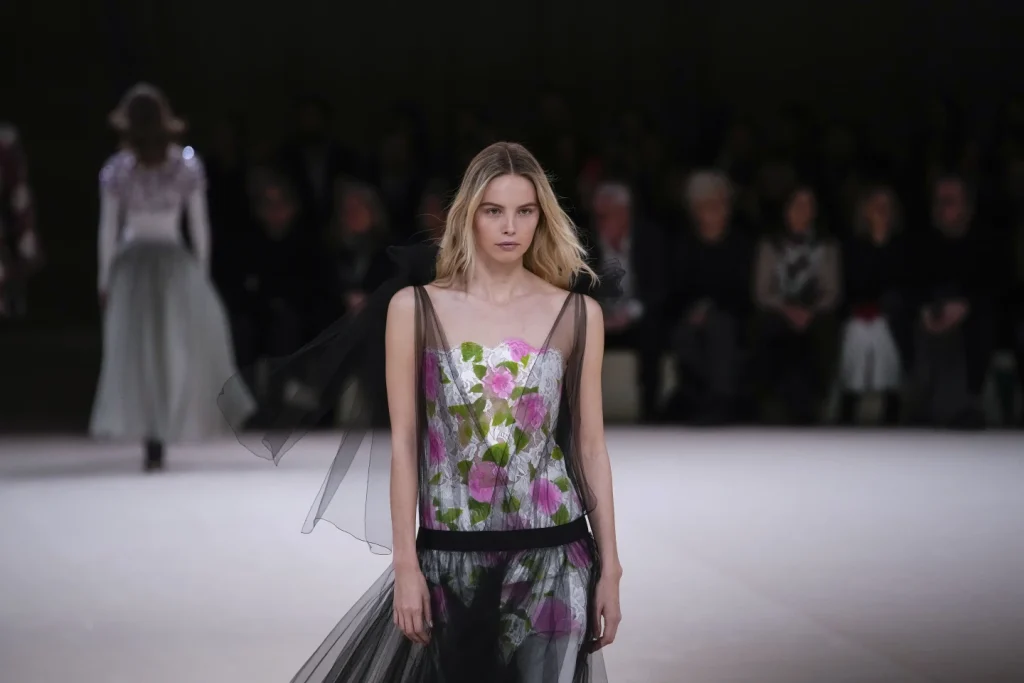
It served as a reminder of the enduring power of fashion as a form of artistic expression and left an indelible mark on all who were fortunate enough to witness it.
The button, a seemingly unassuming and utilitarian element of fashion, has undergone a remarkable evolution throughout history.
Once a mere fastening device, it has transcended its practical purpose to become a symbol of liberation, creativity, and elegance.
This transformation is exemplified by the innovative use of buttons in Chanel’s recent couture collection, where they were elevated to the status of jewels, adorning garments that paid homage to the world of ballet and dance.
Gabrielle “Coco” Chanel, a pioneering figure in the fashion industry, is credited with revolutionizing women’s attire through her introduction of the women’s suit.
Central to this iconic ensemble was the button, which, according to the house of Chanel, played a vital role in enabling women to “rid themselves of everything that had prevented them from moving freely.”
This historical context sets the stage for understanding the significance of the button in contemporary fashion, particularly in Virginie Viard’s creative direction for Chanel’s latest couture display.
In the grand setting of the Grand Palais Ephemere, Viard masterfully integrated button-jewels into her collection, using them as exquisite embellishments that celebrated the freedom of movement synonymous with ballet and dance.
The juxtaposition of these button-jewels against segmented silhouettes and contrasting fabrics created a captivating visual spectacle, evoking the drama and grace of the ballet stage.
From the striking tulle ruff neck adornment that opened the show to the A-line black mini dress reminiscent of a ballerina’s silhouette, each piece in the collection exuded an air of elegance and fluidity.
A noteworthy aspect of Viard’s approach was her conscientious acknowledgment of Chanel’s historical ties to ballet design, particularly as 2024 marks a century since Coco Chanel’s foray into this domain.
The collection’s color palette, featuring shades of pink and white reminiscent of the Ballets Russes, paid homage to the vibrant style associated with this influential artistic movement.
Viard’s deep-seated connection to the world of dance was evident as she expressed, “Dance, it’s an essential theme at Chanel.
We are closely linked with its institutions, choreographers and dancers, and we often create costumes for the ballet.”
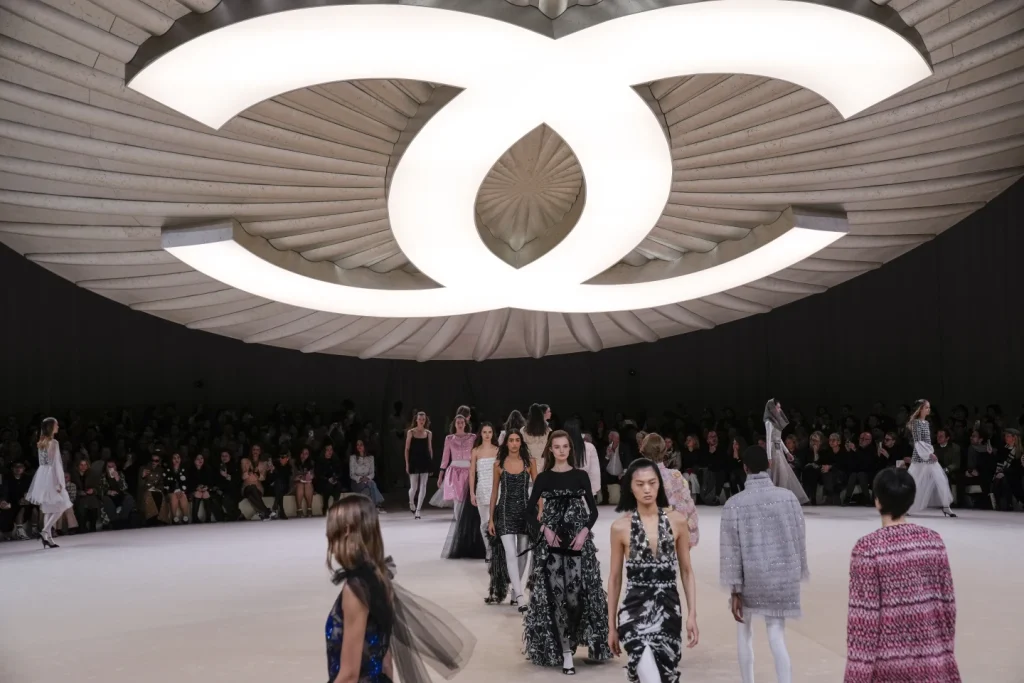
The garments themselves bore the hallmarks of ballet attire, with tight bodices, billowing tulle skirts, and intricate embroideries that depicted draperies, bows, and lace belts.
The transparent short straight skirts, long dresses, and jumpsuits, adorned with delicate details, seamlessly wove the ballet theme into the fabric of each garment.
However, despite the evident homage to ballet and dance, Viard’s collections have been noted for their lack of a singular cohesive aesthetic, a departure from the era of her predecessor, Karl Lagerfeld.
The audience’s enthusiastic reception of Viard’s collection, despite its departure from a singular aesthetic vision, speaks to the enduring allure and impact of Chanel’s designs.
The transformative power of the button, from a functional necessity to an ornate symbol, is a testament to the ever-evolving nature of fashion and its ability to transcend mere utility, embodying deeper meanings and cultural significance.
In conclusion, the button’s journey from a humble fastening device to a jewel-like adornment reflects the dynamic nature of fashion and its capacity to encapsulate historical narratives, artistic inspirations, and the spirit of liberation.
Viard’s innovative use of button-jewels in Chanel’s couture collection serves as a compelling example of how a seemingly ordinary element can be elevated to extraordinary heights, infusing garments with symbolism and storytelling.
As fashion continues to evolve, the button stands as a poignant reminder of its enduring ability to captivate, inspire, and transcend its functional origins.
This essay explores the evolution of the button in fashion, drawing inspiration from the recent couture collection by Chanel’s creative director, Virginie Viard.
It delves into the historical significance of the button, its transformation into a symbol of liberation and creativity, and its role in Viard’s contemporary designs.
Through meticulous attention to detail and nuanced storytelling, this essay captures the essence of the button’s journey, from its humble beginnings to its current status as a revered element in the world of high fashion.
In the realm of haute couture, the convergence of fashion and film has long been a source of inspiration, innovation, and spectacle.
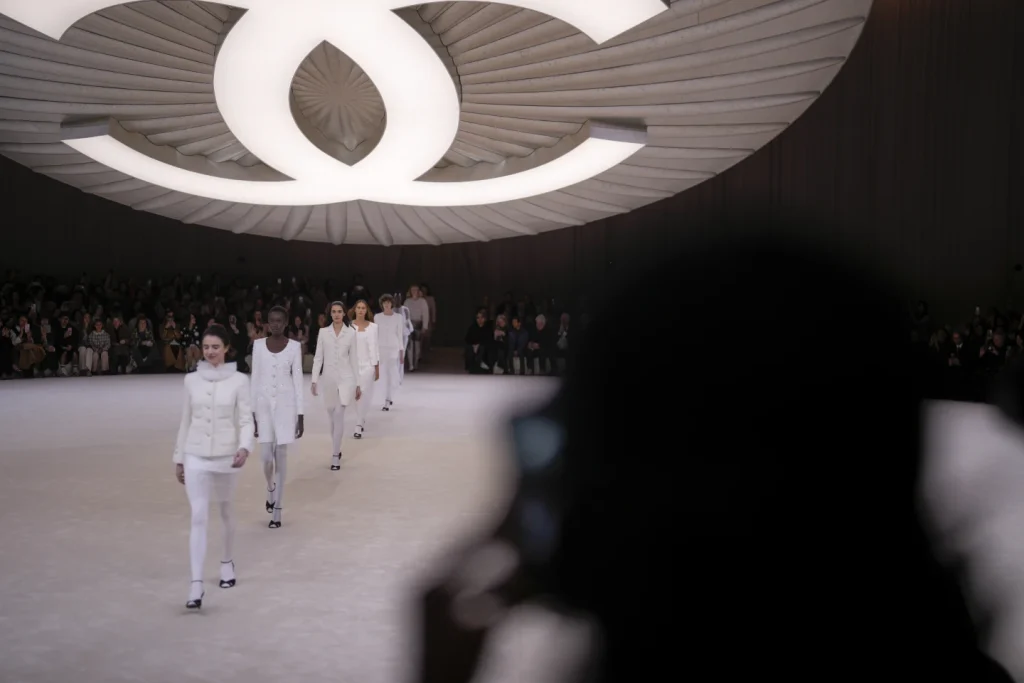
This intersection reached new heights with a mesmerizing fashion film, a captivating narrative that unfolded as a prelude to a couture show, illuminating the runway’s curtained walls with a whimsical tale directed by the visionary Dave Free.
At the heart of this cinematic ode was Margaret Qualley, the talented actress and daughter of the iconic Andie MacDowell, who graced the screen with an enchanting performance, evoking a sense of nostalgia akin to Barbra Streisand’s unforgettable portrayal in “Funny Girl.”
The narrative, akin to a modern-day fairytale, followed the journey of a captivating young woman on a quest for a missing button, a seemingly simple yet profound quest that led her to the very heart of Paris.
In a stroke of serendipity, the legendary style icon Naomi Campbell made a cameo, offering Qualley a ticket to the fashion capital, setting the stage for an unforgettable adventure.
The climax of this cinematic escapade unfolded on the hallowed grounds of Rue Cambon, where Qualley’s path intersected with the embodiment of timeless elegance, a modern-day incarnation of the legendary Coco Chanel, portrayed by the enigmatic Anna Mouglalis.
Mouglalis, with her instantly recognizable baritone, effortlessly breathed life into the role, having previously brought the iconic designer to the screen with unparalleled grace and authenticity.
This cinematic journey, a fusion of storytelling and sartorial elegance, served as a mesmerizing prelude to the real spectacle that was to follow.
As the film reached its crescendo, the seamless transition from screen to stage unfolded, as Qualley emerged from the world of celluloid into the realm of reality, opening the couture show with an ethereal grace and poise that encapsulated the essence of Chanel’s timeless allure.
The convergence of fashion and film in this mesmerizing ode to Chanel was not merely a spectacle, but a testament to the enduring power of storytelling and the art of fashion.
It underscored the ability of narrative and visual artistry to transcend the confines of traditional runway presentations, elevating the experience to a realm of immersive storytelling, where the boundaries between reality and fantasy blurred, leaving an indelible impression on the audience.
Beyond the superficial allure of haute couture and the glitz of the silver screen, this cinematic fusion served as a poignant reminder of the enduring legacy of Chanel, an iconic brand that has consistently pushed the boundaries of creativity and innovation.
It showcased the brand’s unwavering commitment to reinvention and storytelling, encapsulating the spirit of Coco Chanel herself, a visionary whose influence continues to resonate through the annals of fashion history.
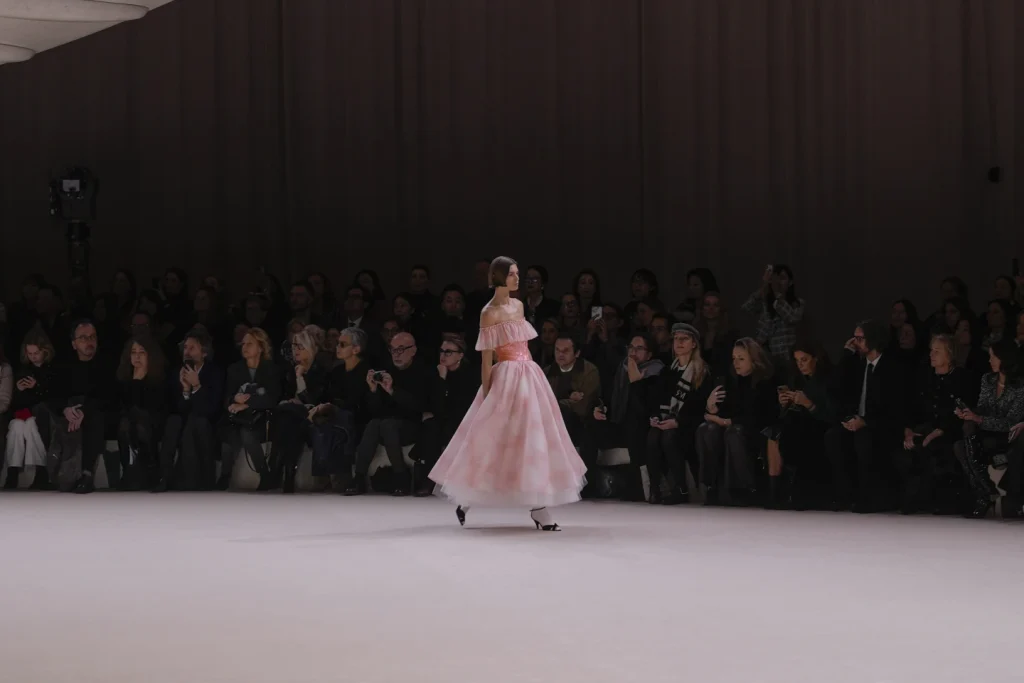
In conclusion, Chanel’s cinematic ode stands as a testament to the enduring power of storytelling, the allure of sartorial elegance, and the boundless creativity that emerges from the fusion of fashion and film.
It is a reminder that beyond the realm of mere aesthetics, lies a world of narrative possibility, where the artistry of fashion and the magic of cinema converge to create an experience that transcends the boundaries of the runway, leaving an indelible mark on the collective imagination.
